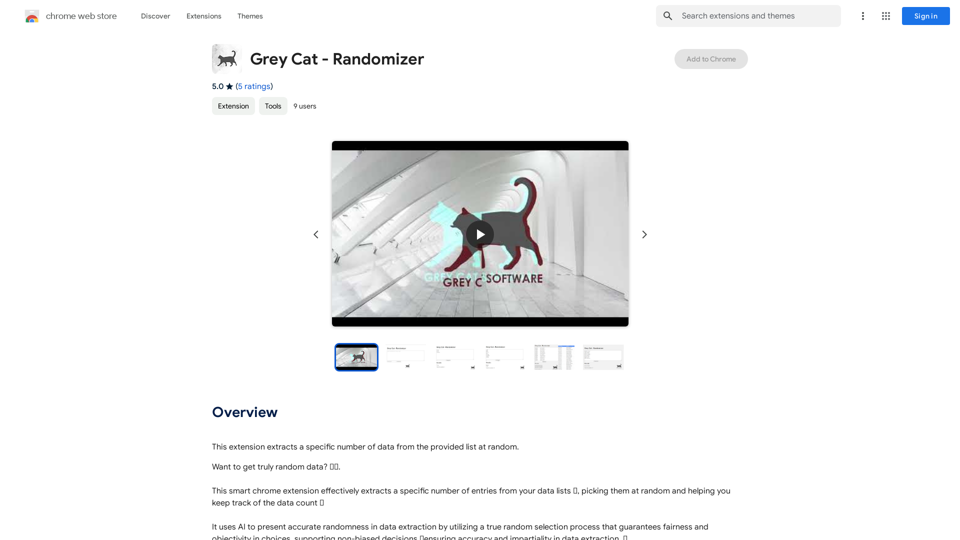Image Translator is a Chrome extension that enables users to quickly translate images into over 30 languages using Google Translate or ChatGPT. It supports various image types, including posters, brochures, screenshots, and advertisements, allowing for effortless translation within seconds.
Image Translator - ai photo/image Translator use ChatGPT This is a tool that uses ChatGPT to describe images. You can upload a photo and ChatGPT will generate a written description of what it sees.
AI Photo/Image Translator, Supports 130 Languages
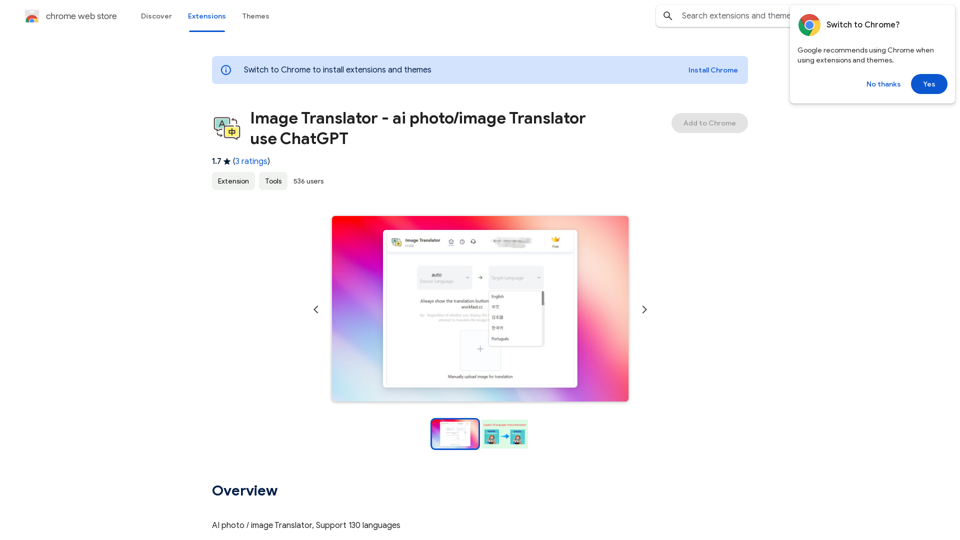
Introduction
Feature
Text Auto Recognition
Image Translator employs cutting-edge AI-based OCR technology to automatically recognize text in images, streamlining the translation process.
Multi-Language Support
The extension offers translation capabilities for more than 30 languages, including widely spoken ones such as English, Spanish, French, German, Chinese, and Japanese.
Free Usage with Upgrade Option
Image Translator provides limited free translations, with the option to upgrade to a paid subscription for unlimited translations.
Easy Installation and Usage
Users can quickly install the extension from the Chrome Web Store and start translating images in just a few simple steps.
Versatile Image Support
The tool can handle various types of images, making it useful for translating posters, brochures, screenshots, and advertisements.
FAQ
Can I use Image Translator for free?
Yes, Image Translator offers limited translations for free. For unlimited translations, users can upgrade to a paid subscription.
How many languages does Image Translator support?
Image Translator supports over 30 languages, covering a wide range of popular and less common languages.
What is the process for using Image Translator?
- Install the extension from the Chrome Web Store
- Select the image you want to translate
- Choose the target language from the dropdown menu
- Click the "Translate" button to process the image
Are there any tips for using Image Translator effectively?
- Ensure you select the correct language for the image you want to translate
- Utilize the text auto recognition feature for automatic text detection in images
- Consider upgrading to a paid subscription if you require unlimited translations
Latest Traffic Insights
Monthly Visits
193.90 M
Bounce Rate
56.27%
Pages Per Visit
2.71
Time on Site(s)
115.91
Global Rank
-
Country Rank
-
Recent Visits
Traffic Sources
- Social Media:0.48%
- Paid Referrals:0.55%
- Email:0.15%
- Referrals:12.81%
- Search Engines:16.21%
- Direct:69.81%
Related Websites

Just type "gpt How to fly a helicopter?" and press Enter ↵. Open new chats with ChatGPT from address bar. No ads or permissions
193.90 M
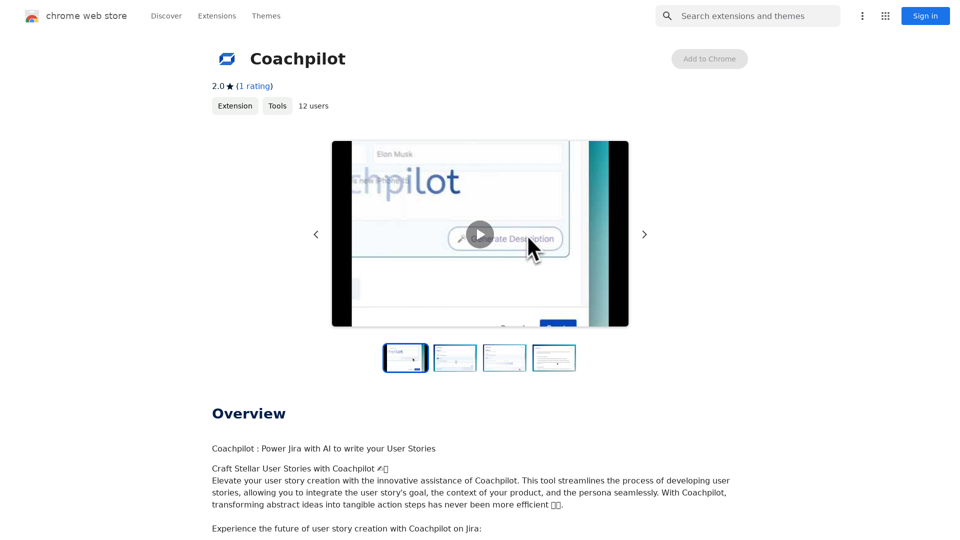
Coachpilot: Use AI to Write User Stories in Jira Coachpilot helps you write better user stories in Jira using the power of artificial intelligence.
193.90 M
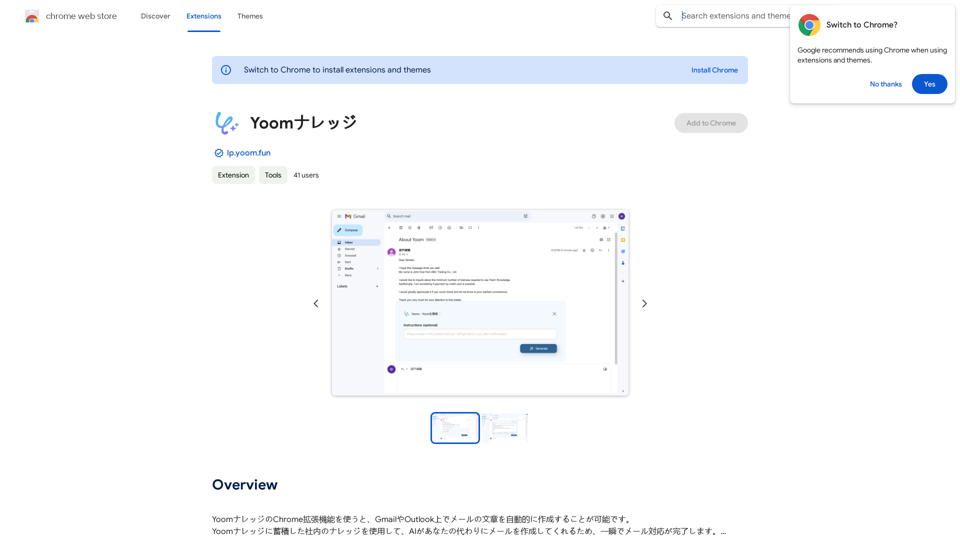
Using the Yoom Knowledge Chrome extension, you can automatically generate email content in Gmail or Outlook. AI will create emails for you using the company knowledge accumulated in Yoom Knowledge, allowing you to complete email responses in an instant.
193.90 M

ChatBao, your AI assistant, works perfectly with search engines to provide more professional answers.
193.90 M
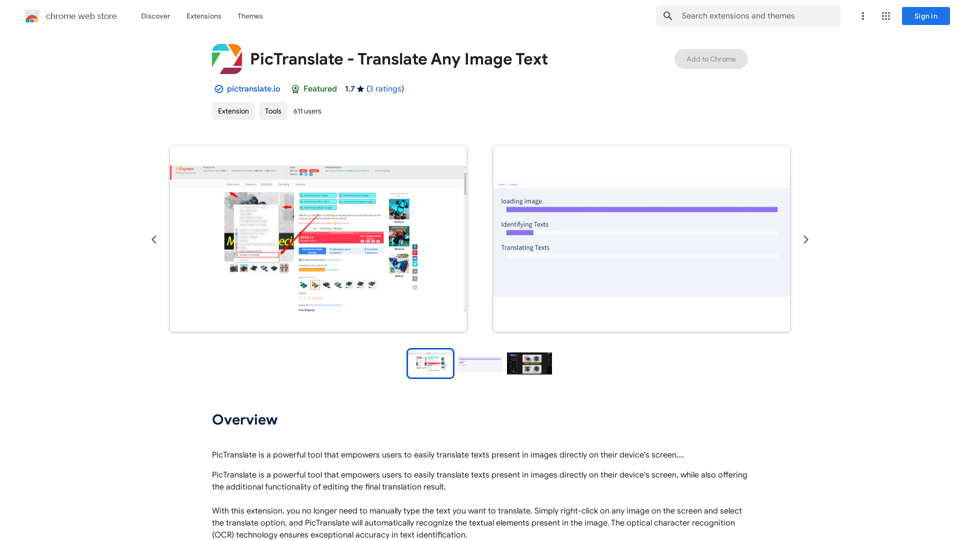
PicTranslate is a powerful tool that empowers users to easily translate texts present in images directly on their device's screen,…
193.90 M
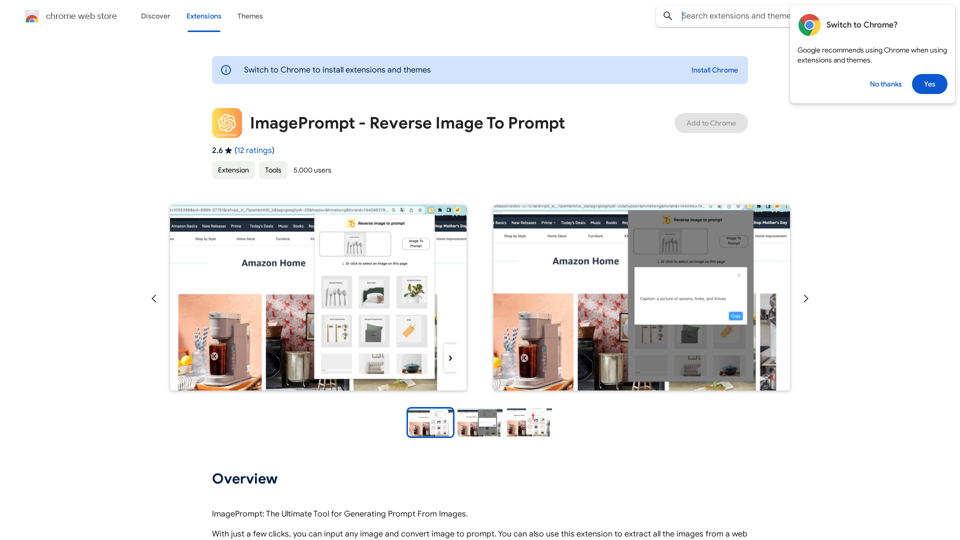
ImagePrompt - Reverse Image To Prompt This tool takes an image as input and generates a textual description (prompt) that can be used to recreate the image using text-to-image AI models.
ImagePrompt - Reverse Image To Prompt This tool takes an image as input and generates a textual description (prompt) that can be used to recreate the image using text-to-image AI models.ImagePrompt: The Ultimate Tool for Generating Prompts From Images.
193.90 M
